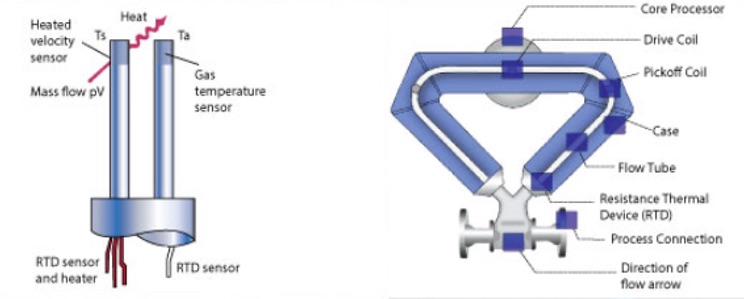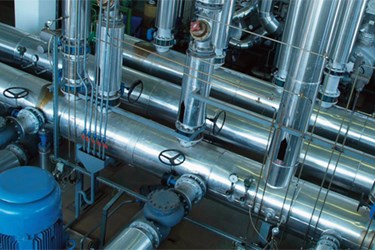

measured the viscosity of the same kind of nanofluids with different dispersion techniques, and stated that the nanofluid could have a lower viscosity if the particles were better dispersed. Ruan and Jacobi obtained no significant falling-film convective heat transfer enhancement and attributed it to a 12.5% viscosity increase and 4.6% thermal conductivity enhancement that they had observed for Al 2O 3-water nanofluids with concentrations of up to 2 vol%. The viscosity of Al 2O 3-water nanofluids prepared by Pak and Cho was almost three times higher than that of pure water. observed 60% and 80% viscosity increases for Al 2O 3-water and TiO 2-water nanofluids with concentrations of 3 vol%, which is more significant than the predictions of Krieger-Dougherty's and Nielsen's models. However, other researchers also noticed a remarkable increase in viscosity for the fluid with nanoparticles. For the viscosity of nanofluids, some researchers found no significant change compared to the base fluid. explored temperature effects on the thermal conductivity enhancement of nanofluids and found that dispersion of nanoparticles into the fluid can significantly enhance its thermal conductivity, and a larger enhancement can be observed at an elevated temperature. investigated the thermal conductivity of carbon nanotube-oil suspensions and obtained a 150% enhancement for the nanofluid with a concentration of 1.0%. observed a 40% thermal conductivity by dispersing 0.3 vol% copper nanoparticles into ethylene glycol. Many researchers found that dispersing a small amount of nanoparticles into a heat transfer fluid can enhance its thermal conductivity dramatically, and the enhancement could be beyond that expected from the conventional mixing theory, such as Maxwell theory and Hamilton-Crosser theory. In 1995, Choi and Eastman firstly introduced the nanometer-sized particles (nanoparticles) into heat transfer fluids and coined the term 'nanofluid.' Recently, developments in nanotechnology made nanometer-sized particles available. However, micrometer or millimeter-sized particles suspended in the fluid usually settle and can cause corrosion and abrasion to the components and systems. Researchers have found many ways to enhance the thermal conductivity of a heat transfer fluid, including suspending solid particles into the fluid. Thermal conductivity and viscosity of a heat transfer fluid play an important role in efficiency improvement of thermal equipment and systems as: air-conditioning and refrigeration, transportation, electronic cooling, heating and ventilating, etc. Hence, the maximum thermal conductivity enhancement and minimum viscosity increase are obtained using a lengthy sonication, which may have implications on application. Over the current experimental range, the reduction in agglomerate size is more significant than the reduction of the carbon nanotube length.

It is also observed that the sonication process not only reduces the agglomerate sizes but also decreases the length of carbon nanotubes.

However, the viscosity of nanofluids increases to the maximum at sonication time of 40 min, then decreases, finally approaching the viscosity of the pure base fluid at a sonication time of 1,355 min. It is found that with an increased sonication time/energy, the thermal conductivity of the nanofluids increases nonlinearly, with the maximum enhancement of 23% at sonication time of 1,355 min. The corresponding effects on the agglomerate sizes and the carbon nanotube lengths are observed. In this work, sonication effects on thermal conductivity and viscosity of carbon nanotubes (0.5 wt%) in an ethylene glycol-based nanofluid are investigated. However, research reports of sonication effects on nanofluid properties are limited in the open literature. Ultrasonication is a common way to break up agglomerates and promote dispersion of nanoparticles into base fluids. The agglomerate sizes in nanofluids can significantly impact the thermal conductivity and viscosity of nanofluids and lead to a different heat transfer performance. Nanofluids with the same nanoparticles and base fluids can behave differently due to different nanofluid preparation methods. The preparation of nanofluids is very important to their thermophysical properties.


 0 kommentar(er)
0 kommentar(er)
